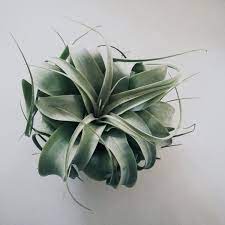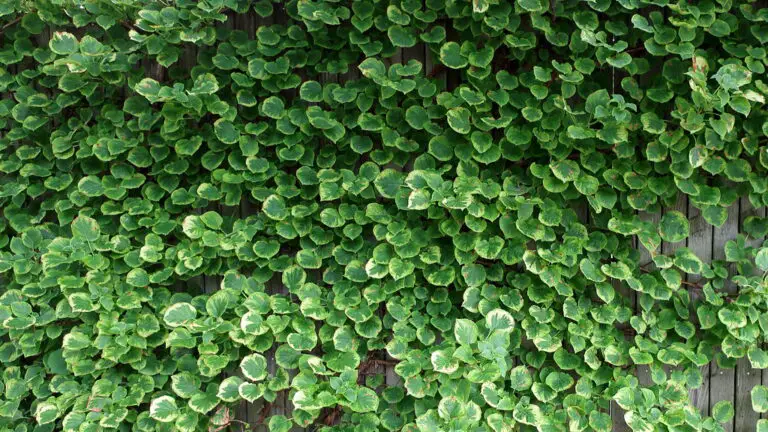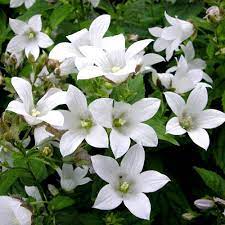Is Your Plant Feeling Cramped? Signs It Needs a Bigger Pot
Ever feel like your houseplants are bursting out of their pots? You’re not alone! Just like us, plants need space to grow happy and healthy. But how do you know when it’s time to give them a bigger home? Here are some telltale signs your plant might be feeling a little cramped:
Root Party: Peek under the pot. Are roots pushing through the drainage holes or circling the outside like a spaghetti monster? This is a classic sign of rootboundness, where roots have filled all the available space.
Growth Stall: Is your plant growing slower than usual, even though you’re giving it proper care? This could be because its roots don’t have enough room to absorb nutrients and water effectively.
Top-Heavy Trouble: Is your plant leaning precariously or tipping over easily? This can happen when the root system can’t support the top growth, indicating it needs more space below.
Thirsty, Thirsty: Does your plant seem constantly thirsty, even after watering? Rootbound plants dry out faster because they have limited access to water.
Slow Drainage: Does water pool on the soil’s surface instead of soaking in? This could be due to compacted soil or packed roots, both signs of needing a fresh start.
Nutrient Blues: Are your plant’s leaves looking pale or yellow despite regular feeding? This could be due to nutrient deficiencies caused by depleted soil in a pot that’s too small.
If you see several of these signs, it’s time to consider repotting your plant! Don’t worry, it’s a simple process that will help your leafy friend thrive once again.
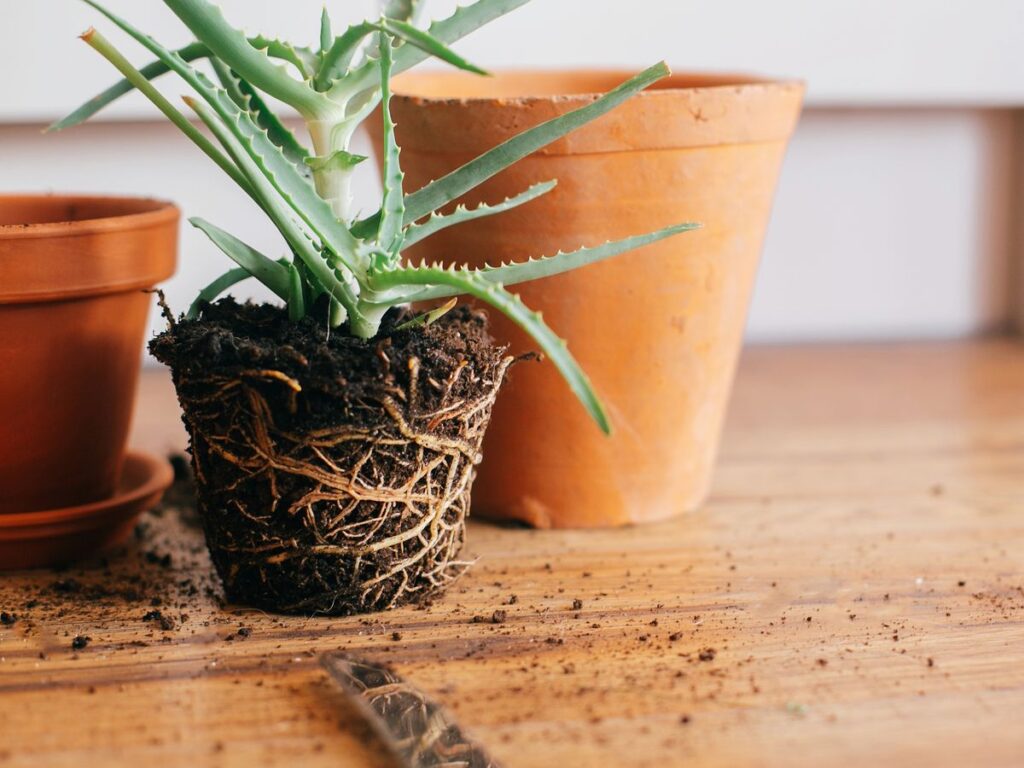
Finding the Perfect Pot Palace: Choosing the Right Container
Finding the perfect pot for your plant is like picking the ideal apartment! It must be the right size, have the right features, and suit your plant’s style. Here’s what to consider:
Material Matters:
- Classic Clay: Breathable and naturally beautiful, clay pots are great for moisture-loving plants but can dry out faster.
- Glazed Glam: Stylish and low-maintenance, glazed pots retain moisture but require drainage holes to avoid waterlogging.
- Plastic Powerhouses: Lightweight and affordable, plastic pots are versatile but can trap moisture, so drainage is key.
- Chic and Sustainable: Woven baskets or recycled materials offer eco-friendly options, but ensure proper drainage.
Size Matters, But Not Too Much:
- Choose a pot only 2-4 inches wider than your current pot to avoid overwatering and root rot.
- Consider the plant’s mature size: a fast grower might need a larger pot initially, while a slow grower can wait longer.
- Match the pot depth to the root system: deep roots need deeper pots, while shallow roots prefer wider, shallower ones.
Drainage is a Must:
- No drainage holes? No problem! Use a pot liner with holes inside a decorative pot without drainage.
- Ensure drainage holes are large enough and not clogged with debris.
Bonus Features:
- Consider self-watering pots for forgetful plant parents or thirsty plants.
- Hanging baskets offer space-saving options for cascading greenery.
- Decorative touches like saucers or pot covers can add personality to your plant’s new home.
Remember, the perfect pot is a happy medium between style and functionality. Choose wisely, and your plant will thank you with healthy growth and vibrant beauty!
Fueling Growth: Picking the Perfect Potting Mix
Think of potting mix as your plant’s buffet! It needs the right mix of ingredients to provide nutrients, drainage, and air circulation for healthy roots. But with so many options available, choosing the right one can feel overwhelming. Fear not, plant parent! Here’s a simplified guide:
Drainage is King:
- Avoid dense, heavy soils that hold water like a sponge. Aim for a light and airy mix that drains well to prevent root rot.
- Look for ingredients like perlite, vermiculite, or pumice, which add drainage and aeration.
Organic Goodness:
- Choose a mix rich in organic matter like compost, worm castings, or bark mulch. These provide essential nutrients and improve soil structure.
- Avoid mixing with synthetic fertilizers, which can be harsh on delicate roots and pollute the environment.
Plant-Specific Needs:
- Different plants have different preferences. Cacti and succulents need a well-draining mix with less organic matter while moisture-loving plants like ferns appreciate a richer mix that retains more water.
- Do your research or consult a plant expert to find the ideal mix for your specific plant’s needs.
DIY or Pre-made:
- Feeling adventurous? You can create your mix by combining ingredients like those mentioned above.
- For convenience, pre-made mixes are available specifically for different plant types. Just be sure to check the ingredients and drainage properties before buying.
Remember:
- Fresh is best! Avoid using old potting mix, as it can lose nutrients and harbor pests.
- Refresh your mix every 1-2 years to replenish nutrients and avoid compaction.
With the right potting mix, your plant will have the foundation it needs to thrive and reward you with lush, healthy growth. So choose wisely, fuel its growth, and watch your plant flourish!
Moving Day! The Step-by-Step Guide to Repotting
Repotting your plant might sound intimidating, but fear not! It’s a simple process that can be done in a few easy steps. Here’s your roadmap to a smooth and successful move:
Gather Your Supplies:
- New pot (2-4 inches wider than the old one)
- Fresh potting mix suitable for your plant
- Watering can
- Gloves (optional)
- Newspaper or cloth to protect your workspace
Prepare the New Home:
- Fill the new pot with fresh potting mix, leaving about an inch of space at the top.
- If using a pot without drainage holes, create a drainage layer at the bottom with pebbles or broken pottery shards.
Gently Evict Your Plant:
- Water your plant thoroughly the day before repotting.
- Carefully turn the plant on its side and gently tap the pot to loosen the roots.
- If the plant is stubborn, slide a butter knife around the inside edge of the pot to help release the roots.
- Avoid pulling on the stems as they can break easily.
Time for a Fresh Start:
- Inspect the roots and gently remove any dead, brown, or mushy ones.
- If the roots are tightly circling the root ball, carefully loosen them with your fingers to encourage outward growth.
- Position the plant in the new pot, making sure it sits at the same level as it did in the old pot.
Fill ‘er Up and Settle In:
- Fill the remaining space around the root ball with fresh potting mix, gently firming it down as you go.
- Avoid packing the soil too tightly, as this can hinder drainage.
- Water your plant thoroughly until water runs out the drainage holes.
- Place your plant in its new home, away from direct sunlight for a few days while it adjusts.
Aftercare is Key:
- Monitor your plant closely for signs of transplant shock, such as wilting or leaf drop. These are usually temporary, but adjust the watering frequency if needed.
- Avoid fertilizing for a few months after repotting, as the fresh mix already provides nutrients.
- Continue to provide your plant with its usual care requirements, including proper light, water, and humidity.
Remember, repotting is an investment in your plant’s future. By following these simple steps, you can ensure a smooth transition and watch your leafy friend flourish in its new digs!
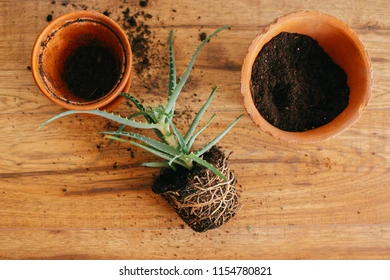
Spring into Action! Why Spring is the Best Time to Repot
Imagine your houseplants basking in the warm spring sun, stretching their roots in fresh soil, and putting on a vibrant show of new growth. That’s the magic of repotting in spring! But why is this season so special for transplanting your leafy companions?
Nature’s Wake-Up Call: Spring marks the start of the growing season for most plants. With longer days and warmer temperatures, they’re naturally primed for growth and change. Repotting during this period taps into this natural growth spurt, giving your plant a head start on flourishing.
Fresh Start, Fresh Energy: Winter can leave your plant feeling a bit sluggish. Repotting in spring provides a much-needed refresh. The new pot and soil offer better drainage, aeration, and nutrients, giving your plant the energy boost it needs to thrive.
Avoiding Transplant Shock: While repotting can be stressful for any plant, the mild spring weather minimizes the risk of transplant shock. The warmer temperatures and longer daylight hours help your plant adapt to its new environment more easily.
Building a Strong Foundation: As your plant grows throughout the spring and summer, its new pot and soil provide the perfect foundation for healthy root development. This sets the stage for continued growth and success through the rest of the year.
Planning for the Future: Repotting in spring allows your plant to establish itself in its new pot before the hot summer months arrive. This gives it a chance to adjust and build a strong root system, making it better equipped to handle the increased heat and water demands of summer.
Of course, there might be times when repotting outside of spring is necessary, like if your plant is severely rootbound or has a sudden growth spurt. However, whenever possible, listen to nature’s cues and give your plants the spring awakening they deserve through timely repotting! Remember, a happy and healthy plant starts with a well-timed move to a fresh new home.
Plant Personalities: Tailoring Repotting to Different Needs
Not all plants are created equal, and their repotting needs can vary greatly. Here’s a peek into the unique preferences of some common houseplant groups:
Fast Growers: Think philodendrons, pothos, and spider plants. These energetic green machines might need repotting every year or two due to their rapid root growth. Opt for a slightly larger pot and well-draining mix to accommodate their active roots.
Light Lovers: Cacti and succulents like desert-like conditions. Choose a pot with excellent drainage and a gritty mix that mimics their natural habitat. Avoid overwatering, especially after repotting, as they’re prone to root rot.
Moisture Mavens: Ferns and peace lilies thrive on humidity and consistent moisture. Repot them in a pot with good drainage but choose a slightly moisture-retentive mix. Ensure the new pot isn’t significantly larger, as overwatering can be a risk.
Drama Queens: Calatheas and prayer plants are known for their sensitivity. Repot them only when strictly necessary, using a mix specifically formulated for their needs. Avoid disturbing the roots too much, and maintain consistent humidity and light levels after repotting.
Climbers and Trailers: Pothos and hoyas love to climb and trail. Report them in a pot with a trellis or moss pole to encourage their climbing habits. Use a well-draining mix and adjust the pot size based on the desired growth pattern.
Bulbs and Tubers: Amaryllis and caladiums have unique growth cycles. Report them only when new growth emerges, using a fresh mix suitable for their specific needs. Be mindful of root depth and pot size to avoid disturbing their sensitive bulbs or tubers.
Remember, these are just general guidelines. Always research your specific plant’s needs for the most accurate repotting advice. By understanding their individual preferences, you can ensure a smooth transition and help your plant thrive in its new digs!
Is It Repotting Time? Deciding if Your Plant Needs a Bigger Home
Not every plant needs a repotting every year. Before you start digging for a new pot, it’s crucial to determine if your green friend truly needs a bigger home. Here are some key clues to help you decide:
Root Party: Peek under the pot! Are roots bursting through drainage holes, circling the outside, or visible above the soil? This is a classic sign of rootboundness, where the roots have outgrown their current space.
Growth Standstill: Is your plant stagnant despite proper care? Slow or stunted growth can indicate a lack of space for roots to absorb nutrients and water effectively.
Thirsty, Thirsty: Does your plant seem constantly thirsty, even after regular watering? Rootbound plants dry out faster due to limited access to water in the pot.
Top-Heavy Wobble: Is your plant leaning precariously or tipping over easily? This can happen when the root system can’t support the top growth, suggesting it needs more space below.
Nutrient Blues: Are your plant’s leaves showing signs of nutrient deficiency, like yellowing or stunted growth, despite regular feeding? This could be due to depleted soil in a pot that’s too small.
Potting Mix Blues: Has your potting mix become compacted, hydrophobic (repels water), or nutrient-depleted? Even if the pot size seems adequate, refreshing the mix can be beneficial.
However, repotting isn’t always the answer:
- Young Plants: If your plant is young and hasn’t filled its pot yet, repotting might stress it unnecessarily. Wait until the roots reach the edges of the pot.
- Seasonal Slowdown: Some plants naturally slow down in winter. If your plant is dormant or resting, repotting it during this period can be detrimental. Wait for signs of spring growth before making a move.
- Sudden Changes: Avoid repotting a plant that’s already stressed due to factors like recent relocation, illness, or pests. Address the stressor first and wait until the plant recovers.
Uh Oh, Repotting Hiccups: Troubleshooting Common Issues
Even the most seasoned plant parent can encounter challenges during repotting. But fear not! Here’s a guide to some common issues and how to navigate them:
Root Damage: Accidents happen! If you accidentally damage roots during repotting, don’t panic. Gently remove any severely damaged or mushy roots using sterilized tools. The remaining healthy roots will compensate and continue to grow.
Transplant Shock: Some plants might sulk after repotting, showing wilting or leaf drop. This is temporary transplant shock. Provide consistent moisture (not overwatering), avoid fertilizing for a while, and keep the plant in indirect light until it recovers.
Drainage Dilemmas: If your new pot lacks drainage holes, create some using a drill or hot poker (be cautious!). Alternatively, use a pot liner with holes inside a decorative pot without drainage. Ensure the liner sits above the bottom of the pot to allow water to collect and drain.
Pot Size Woes: Choosing the wrong pot size can be tricky. If the pot is too large, the soil might stay wet for too long, leading to root rot. If it’s too small, the plant will quickly become rootbound again. If unsure, err on the side of slightly smaller and repot sooner if needed.
Watering Worries: After repotting, water thoroughly until water runs out of the drainage holes. Then, adjust your watering frequency based on the new pot size and the plant’s specific needs. Avoid overwatering, as the new mix might retain moisture differently than the old one.
Fertilizing Faux Pas: Don’t fertilize your plant immediately after repotting. The fresh potting mix already contains nutrients, and fertilizing stressed roots can do more harm than good. Wait at least a month or two before resuming your regular fertilizing schedule.
Beyond Repotting: Alternative Solutions for Happy Plants
Not every plant needs a full-blown repotting every year. Sometimes, alternative solutions can be just as effective, saving you time and effort while keeping your plant happy. Here are some options to consider:
Root Pruning: This involves carefully trimming off a small portion of the outer roots to encourage new growth within the existing pot. It’s a good option for slightly rootbound plants or those that dislike frequent repotting, like cacti and succulents.
Top-Dressing: Instead of repotting, simply add a fresh layer of potting mix on top of the existing soil. This replenishes nutrients and improves drainage for plants that don’t require frequent root space changes, like African violets or bromeliads.
Dividing: Some fast-growing plants, like spider plants or peace lilies, can be divided into multiple smaller plants. This creates a fresh start for each division and helps control their size.
Potting Up: This involves moving your plant to a slightly larger pot (only 1-2 inches wider) without disturbing the roots too much. It’s ideal for plants that are nearing the end of their current pot’s lifespan but might not need a full repotting yet.
Choosing the Right Pot: Remember, sometimes the issue isn’t rootboundness, but the pot itself. If your plant is in a material that retains too much moisture or lacks drainage holes, consider transferring it to a more suitable pot without disturbing the roots.
The key is to choose the solution that best suits your plant’s individual needs and preferences. Research your specific plant and observe its behavior to determine the most appropriate approach. By using these alternatives strategically, you can keep your plants healthy and happy without the frequent upheaval of full repotting.
Remember, a little plant wisdom and observation go a long way! By understanding your plant’s language, you can provide the right care at the right time, ensuring it thrives and brings you joy for years to come.
Celebrate Success: Enjoying the Fruits (and Leaves!) of Your Repotting Efforts
Congratulations! You’ve successfully navigated the world of repotting, giving your plant a fresh start and a chance to flourish. Now, it’s time to celebrate the rewards of your careful attention. Here are some ways to enjoy the fruits (and leaves!) of your labor:
Witnessing New Growth: Soon after repotting, you’ll likely see a surge of new growth as your plant revels in the extra space and nutrients. Watch with pride as new leaves unfurl, stems lengthen, and your plant takes on a fuller, healthier appearance.
Improved Health: Repotting can address issues like rootboundness, nutrient deficiencies, and drainage problems, leading to a healthier plant overall. You might notice fewer yellowing leaves, less susceptibility to pests and diseases, and overall more vibrant foliage.
Enhanced Beauty: A well-repotted plant can become a stunning focal point in your home. The fresh potting mix and pot combination can add a decorative touch, while the healthy, vibrant growth enhances the plant’s natural beauty.
More Confidence as a Plant Parent: Successfully repotting builds your confidence and knowledge as a plant caregiver. You’ve learned valuable skills you can apply to other plants in your collection, fostering a sense of accomplishment and pride.
A Deeper Connection with Your Greenery: Repotting brings you closer to your plant. You gain a better understanding of its needs and observe its responses firsthand. This deeper connection fosters a sense of responsibility and appreciation for your leafy companion.
Remember, repotting is an investment in your plant’s future. You’ll enjoy its beauty and companionship for years to come by providing it with the right environment to thrive. So go forth, repot with confidence, and witness your plants blossom under your care!

